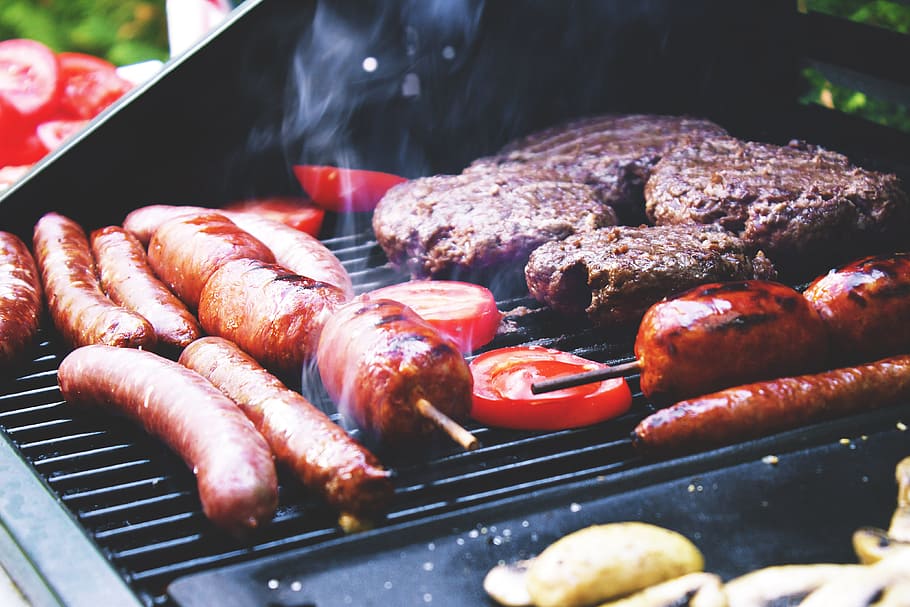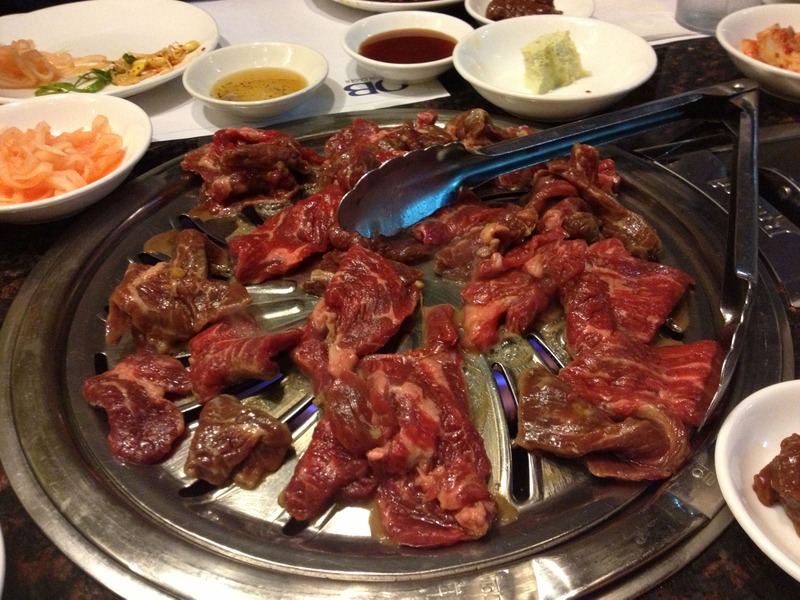When we hear barbeque, we think that it’s a very American thing. True enough, Americans love their barbeque and their barbeque parties, and they are willing to engage in debates about what state prepares the best of each meat and what side dishes are the best. But incidentally, various styles of barbeque have stretched far beyond the US.
The exact history of barbeque is unknown, but because the term comes from “barbacoa,” a word borrowed from the Arawak people of the Caribbean – barbeque probably originated there. Initially, the barbacoa was a wooden frame put up on posts, in which the Arawak people use to steam or smoke food. It was adopted by Spanish colonists, who then spread it to the world.
When we look at a barbeque on its simple state – meat cooked on a heap of wood or charcoal placed on top of a metal pan or pit – it’s within reach of practicality for anyone on earth. Unlike other methods of cooking meat, barbequing doesn’t rely on fancy kitchen gadgets and tools, making it easy to replicate. Countries all over the globe have a distinct barbeque style. Here are some of the popular methods that sprung around the world:
United States – BBQ
Barbeque has been a very American food, and it has been in the United States since the founding of the country. George Washington wrote about going to a barbeque party in 1769. Barbeque is a food enjoyed ever since time immemorial.
However, you can’t treat American barbeque as one particular item. Some parts of the country like North and South Carolina see barbeque as whole-hog pork, but their kinds of sauces are varied. Memphis barbeque is also pork, but pork shoulder sandwiches and ribs take precedence. Kansas uses all types of meat. And there’s Texas, where everyone loves their barbeque in the form of beef, but the state still has four different styles of barbeque. Plus, there’s the term “backyard barbeque,” which refers to grilling meat like burgers and hotdogs while eating out in the backyard with friends and family. Whatever barbeque you enjoy, there’s no one right way to make the American barbeque.
Argentina – Asado
Asado means “roast” in Spanish, and it’s an essential cultural food in Argentina. The asado barbeque is large pieces of meat roasted over a fire. In an Argentinian menu, when you order asado, you get huge slabs of meat (sometimes even whole animals) stretched out and smoked over an open fire pit, along with sides of simple salads, grilled veggies, and chimichurri for dipping. The chimichurri sauce has vinegar, oregano, garlic, onion, oil, pepper, and parsley. They also pair it with salsa criollo, which is made of red bell peppers, tomato, olive oil, and onions. These are often served with free-flowing wine while you’re swapping stories with your family and friends.
Korea – Gogigui
In Korean, gogigui literally means “meat roasting,” but it’s better known in other countries only as Korean barbeque. Famous Korean barbeques in the world include bulgogi, which can be made of pork or beef. The meat in bulgogi is marinated first in soy sauce, honey, garlic, pepper, and scallions, and then it’s grilled. What’s to love about Korean barbeque is it’s served with small side dishes like kimchi, bean sprouts, zucchini, and cabbages, and wrapped in a lettuce leaf. It’s a pretty well-rounded meal. The meats are thinly sliced and cooked in a tabletop grill, so you’re grilling as you eat. These meats are washed down with ice cream or soju (Korean rice liquor).
Tandoori – India
In India, the barbeque grilling is done a little more neatly. The meat is not grilled over an open fire, but inside a buried clay called the tandoor. The tandoor is a bell-shaped clay oven in which fire is built. The cook layers wood and charcoal first on the floor of the pot, lights it up with fire, and adds the meat directly on top of the fire. The flames and swirling hot air works to cook the meat, plus the fat dripping on the coals also smoke it, too. Tandoori chicken is one of India’s prominent dishes, though you can use tandoor for cooking any kind of meat or seafood. Tandoori comes with side dishes like basmati rice, naan bread, and cucumber raita sauce.
Braai – South Africa
Taken from an Afrikaans term that means “grill,” braai is a South Africa’s cherished version of the American backyard barbeque. The word also works the same way “barbeque” do – you go to braai and eat, you put the meat on braai, and you braai the meat. It’s an all-encompassing term. Any meat can be cooked as a braai, such as chicken, pork chops, lamb, sausages, steaks, fish, kebab, ribs, or lobster. Some people choose to feature local meats like antelope and ostrich. Braai meat is usually covered with an assortment of rubs and spices, typically containing paprika, nutmeg, cayenne, cumin, allspice, coriander, black pepper, garlic cloves, and powder.
Khorkhog – Mongolia
Mongolian barbeque or khorkhog is the meal of the countryside nomads. It’s cooked in a portable method in which meat (usually lamb or goat) is chunked into bone-in pieces and layered over the fire-warmed stones inside a large metal milk jug. Instead of heating the jug over the fire, the cook pours water in which the rocks turn into steam. With the lid on, the steam and hot rocks cook the meat into something like a dry stew. The meat is eaten by hand. This authentic Mongolian barbeque is not easy to find in restaurants, but one that does serve this kind of khorkhog is Modern Nomads 2 in Ulaanbaatar.
Barbacoa – Mexico
As mentioned earlier, “barbacoa” is the Spanish term in which the word “barbeque” came from. It’s the name they gave the cooking style popular with the indigenous people from the Caribbean. At its most traditional form, barbacoa is a whole sheep that is slow-cooked over an open fire pit until the meat is tender and succulent. The sheep and hole are covered with maguey leaves, which release steam as it cooks, giving additional flavor to the meat. Whether it’s made from sheep, goat, pork, or beef, barbacoa is a rich and fatty dish.
Lechon – Philippines
For birthday parties, weddings, and any Filipino celebration, a lechon is a staple. Lechon is a rotisserie-style, whole pig roasted over a charcoal pit. Often, the pig is rubbed with soy sauce, coconut water, or milk, and stuffed with salt, and then flavored with garlic, onion, lemongrass, star anise, bay leaves, leeks salt, and pepper – depending on the recipe of the cook. Because it’s a whole pig, lechon takes all afternoon to cook, and the reward is the exciting sensation of biting through the crispy, brick-red skin of the pig. The lechon has a simpler, pan-fried cousin called lechonkawali, which is a more budget-friendly option perfect if you’re only feeding a small group of people. Lechon is best enjoyed with rice, lechon sauce, or a sweet Filipino gravy, Mang Tomas.
Chuan – China
Chuan, referred to in the Northeast of China as chuan’r, are small pieces of meat roasted on skewers and are popularly sold as street food. This dish was created by the Muslim Uyghurs of the Xinjiang region in West China. It’s a regional lamb dish but now is applied to meats of every kind, even seafood, and insects. This is cooked on a metal pan on a raised surface, and is filled with smoldering coals and topped with a wire rack. You can find authentic chuan in every major Chinese city, but you may want to try it in a restaurant GuomaoKaochi in Beijing.
Kalua – Hawaii
Hawaii is part of the United States, but their barbeque tradition is different from the backyard barbeque tradition of the continental US. Their barbeque, kalua, is cooked in an underground oven called an imu, and it’s adapted from the traditional cooking methods of the native Hawaiians. The kalua pig is their famous barbeque, in which the pig is buried in a sandpit and covered with hot ash and dug up later when it’s cooked through. Taro-based dishes like poi, plus leaf-wrapped laulau, and various side dishes are served with the kalua.




